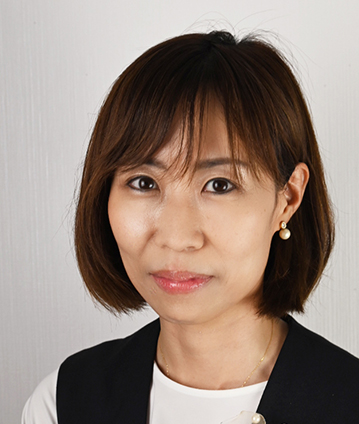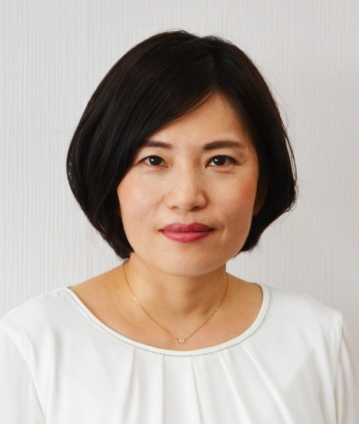About School
Introduction of Principal and Chairman of the Board

Principal Kawabata Miki

Chairman of the Board Ube Megumi
Educational philosophy
The primary aim of the school is to develop students’ Japanese language skills, which will enable them to understand Japanese culture and society, and to acquire knowledge and communication skills as members of society.
Through a variety of educational programs centered on the Japanese language, we aim to produce international students who will be able to play an active role in Japanese society as well as in the world, and to cultivate human resources capable of realizing their own dreams.
Three Educational Goals
- Pass JLPT N1 level
- Japanese language skills for higher education
- Japanese language skills to adapt to Japanese society
The globalisation of society and the economy is making remarkable progress, and international exchange and cooperation are becoming more and more necessary. In particular, Japan will host the Tokyo Olympics in 2020, which will attract a large number of visitors from neighbouring countries in Asia and around the world, and the activities of Japanese companies will transcend national boundaries, leading to greater human exchange and market integration than ever before. As a result, the demand for Japanese language education will continue to increase, and wel hope to play a role in sending international people with advanced Japanese language education to Japan and abroad.
In this environment, it is important for students to acquire not only language skills, but also deep and broad knowledge and excellent Japanese skills at Japanese universities, graduate schools and vocational schools, and to strengthen their communication skills. In order to achieve this, we would like to train our students to pass the Japanese Language Qualification Test within a limited period of time and to be able to use their language skills.
In order to develop such human resources, we will enhance the learning curriculum, recruit highly qualified and experienced teachers, provide high quality teaching, develop teaching materials, provide opportunities for multilingual communication and exchange, and deepen mutual understanding. We also provide safe and comfortable teaching facilities and a wide range of teaching aids. At the same time, we support students in their studies and daily life according to their abilities and circumstances.
Educational content of comprehensive Japanese language ability
Our students will be able to acquire the comprehensive Japanese language skills of listening, reading, speaking and writing in a practical manner and within a limited period of time through the use of highly skilled and experienced teachers and educational curriculums.
2-year Japanese Language Course
This course is designed for students who wish to enter a Japanese university, vocational school or graduate school. In order to develop the Japanese language skills necessary for academic study and research at Japanese universities and other educational institutions, the course provides a balanced study of the four skills of the Japanese language (listening, speaking, reading and writing), and helps students to acquire and further improve their Japanese language learning habits and abilities in a solid and systematic way.
We also provide in-depth Japanese language training to prepare students for the Japanese Language Proficiency Test (JLPT) and the Examination for Japanese University Admission for International Students (EJU), which are essential for university and graduate school entrance exams in Japan. As part of the preparation for higher education, we set up a yearly schedule for students from the time they decide on their course of study to the time they take the entrance examinations, and provide detailed guidance on daily life, study management, and mock interviews.
1-year and 6-months Japanese Language Course
This course is designed to teach the basics of the Japanese language using the main teaching materials and to build a solid foundation of skills that can be applied in practice. In order to systematically and firmly acquire the four skills of listening, speaking, reading and writing, we have set up a basic course and use the main teaching materials to steadily improve basic skills.
The purpose of the course is not only to prepare for the examinations, but also to acquire Japanese language skills that can be used in daily life and work in Japan, and to understand Japanese culture and circumstances.
カリキュラム
| Hours | Class content and goals (Summary) | Main Textbooks | |
|---|---|---|---|
| Beginner | 400 hours |
Learning vocabulary and sentence structure for basic language activities. Learning to explain and write briefly about personal matters. *Passing the N3 level of the Japanese Language Proficiency Test. |
文化初級日本語I・II 楽しく聞こう1・2 楽しく読もう1・2 やさしい作文 |
| Pre-intermediate | 400 hours | Learning the vocabulary and grammar to understand texts on familiar topics and social content. Learning to communicate more naturally and to write their own opinions in an appropriate structure. |
文化中級日本語I・II 毎日の聞き取り(中級) 日本語を楽しく読む本 日本語の作文技術 |
| Upper intermediate | 400 hours |
Learn basic vocabulary and grammar to be able to understand texts of a slightly more technical nature. Learn to converse at a discourse level and write logically coherent content. *Passing the N2 level of the Japanese Language Proficiency Test. |
上級で学ぶ日本語 どんなときどう使う日本語表現文型500 日本語上級話者への道 日本語の表現技術 |
| Advanced | 400 hours |
Vocabulary, grammar and reading comprehension strategies for understanding professional and academic content. Learning to speak and write logically and persuasively. * Passing the N1 level of the Japanese |
日本文化を読む 聴解発表ワークブック 論文ワークブック 留学生のための時代を読み解く上級日本語 |
Guidance and activities outside the classroom
In both courses, in addition to classroom learning, students are given detailed guidance in life, study management, mock interviews, etc., with a yearly schedule set up to prepare them for higher education, from deciding on a career path to taking entrance exams.
In addition, events are held both inside and outside the school. These include speech contests and social events inside the school, and sports events, recreational excursions, and visits to museums and factories outside the school.
Features of the school
The teachers have many years of experience in teaching Japanese and can draw on their own experience of teaching in other countries.
The maximum number of students allowed in each class will be 18 ~ 20. Aiming for a small class with meticulous attention, we will deploy experienced and trusted faculty members, and in order to acquire not only the basic abilities of the 4 skills such as “listen, speak, read, and write” used in daily life, but also the ability to read logical texts in the field of expertise as well as knowledge of technical terms, and the ability to present one’s ideas in reports and papers more accurately through scientific and logical thinking, in order to study as well as Japanese students.
By interacting with local Japanese and international students from other countries, we help them to acquire the ability to live in a different culture and to communicate and adapt to different cultures in a way that is accepted worldwide.
In addition to providing learning guidance, we will provide appropriate and detailed guidance to each and every student in every aspect of education, career counseling, guidance for adapting to life in Japan, visa renewal procedures, etc.
We will also be actively involved in volunteer projects in the surrounding area for the purpose of Japanese language education and international cross-cultural exchange. Through activities such as debates with local elementary and junior high school students, participation in local clean-up volunteer activities, and work experience at a town factory, we will provide a variety of experiences to learn about Japanese culture and to help local residents understand the importance of international exchange. Through these activities, we not only teach the Japanese language, but also allow the students to experience Japanese culture through extracurricular activities such as tea ceremony, flower arrangement, kimono making, hot spring trips, etc., and learn Japanese manners and etiquette, which are highly regarded around the world. We strongly hope that the students will learn correct and practical Japanese, which will be useful for their future international activities.
Introduction of teachers and staff
Our teachers are highly skilled, experienced, and dedicated researchers. Teachers not only have a wealth of teaching experience, but they also possess excellent language skills that enable them to freely use English and Chinese, and they are also active in the development of teaching materials, and their achievements and abilities have earned them a reputation.
Educational facilities
Osaka, the second largest city in Japan after Tokyo, is located in the west of Honsyu, Japan, and is the transport center of the Kansai region, with a well-developed network of airports, shinkansens, railways, subways and roads, connecting neighbouring cities and tourist destinations such as Kyoto, Nara and Kobe.
The newly renovated Osaka Meisei International Japanese Language School is located a 10-minute walk from Nagata Station on the Osaka Metro Chuo Line, making it very convenient to get to Umeda, the commercial centre of Osaka, in about 30 minutes.
With a maximum of 18 to 20 students per class, the clean and spacious classrooms are ideal for language teaching.
There are three classrooms for Japanese language classes on the second and third floors. The school also has a teacher's room and a library. The library has a wide range of books and resources for study and further education, which students can browse at any time, as well as resources for entry to vocational schools and universities, and career advice and information.
